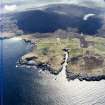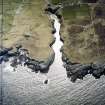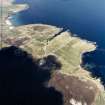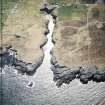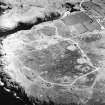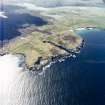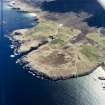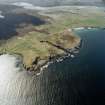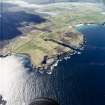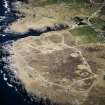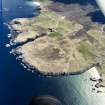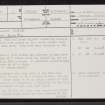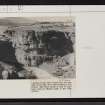Following the launch of trove.scot in February 2025 we are now planning the retiral of some of our webservices. Canmore will be switched off on 24th June 2025. Information about the closure can be found on the HES website: Retiral of HES web services | Historic Environment Scotland
Smoo Cave
Cave(S) (Period Unassigned), Midden (Period Unassigned), Pin(S) (Bone)(Period Unassigned)
Site Name Smoo Cave
Classification Cave(S) (Period Unassigned), Midden (Period Unassigned), Pin(S) (Bone)(Period Unassigned)
Alternative Name(s) Glassknapper's Cave; Antler Cave; Wet Weather Cave; Alt Smoo; Allt Smoo; Leirinmore
Canmore ID 4953
Site Number NC46NW 6
NGR NC 4188 6714
NGR Description Centred NC 4188 6714
Datum OSGB36 - NGR
Permalink http://canmore.org.uk/site/4953
- Council Highland
- Parish Durness
- Former Region Highland
- Former District Sutherland
- Former County Sutherland
NC45NW 6 centred 4188 6714.
(NC 4188 6714) Bone and stone objects resembling Obanian culture artifacts were picked up in a water eroded shell midden inside Smoo Cave. They have been retained by the finder.
I Keillar 1972.
The shell midden is just within the entrance to Smoo Cave on the east side of a stream which has eroded it, and is much flattened by foot passage. It measures approximately 3.0 m in diameter by 0.2 m high.
Visited by OS (J M) 11 April 1980.
No proper excavations have been done at the Smoo Cave although a mound, thought to be a kitchen midden, was dug over in 1904. There seems to be no extant record of this, but Donald Macdonald of Sangomore, a
schoolboy at the time, recalls that a number of bone pins were found. More recently Ian Keillar of Elgin came across two pieces of bone and a worked stone which had been exposed by the action of the burn on the sandy cave floor. These were thought to be reminiscent of the mesolithic period, but Mr Keillar gave them to an itinerant 'expert' who subsequently disappeared.
J A Johnston 1981.
(Location indicated as NC 4188 6712). Scheduled as Smoo Cave, prehistoric occupation site.
Information from Historic Scotland, scheduling document dated 9 December 1992.
GUARD were contracted to cut back and record the eroding face of a shell midden situated immediately within the entrance of Smoo Cave, Sutherland. This controlled removal of material was necessary in order to accommodate the construction of a wall which would protect against further erosion caused by the Allt Smoo as it runs through the cave to the sea.
Several occupation/activity horizons were identified during the course of this work. The shell midden, the earliest phases of which asppear to be Iron Age, represented the latest phase of this activity. This deposit post-dates, and may be related to, structural elements revealed within the section. These included hearths and a post hole with possible stone walling related to it.
The earliest deposits, which are substantially lower than the present cave floor, may represent Mesolithic activity. This evidence took the form of butchered bones and rough flakes of quartz situated on marine sands. Samples taken from throughout the section await detailed analysis and submission for radiocarbon assay.
The investigation also brought to light a further shell midden deposit located in a former cave some 50m to the NW of Smoo Cave. A quern stone was later recovered from this section, which is undergoing constant erosion by the sea.
Sponsor: Caithness and Sutherland Enterprise.
A Pollard 1992.
NC 418 671 (centred on Smoo Cave)
(1) Glassknapper's Cave and Antler Cave: During the spring of 1995 GUARD were commissioned to carry out the rescue excavation of coastal midden deposits. The deposits were located in two small adjoining caves which were situated in the western wall of the narrow, canyon-like inlet through which the Alt Smoo flows. The much larger cavern known as Smoo Cave is situated some 80m to the S of these caves at the back of the inlet. It was during work carried out in the larger cave that archaeological deposits in the smaller caves were first identified (Pollard 1992). The caves were named by the excavators as a means of preventing confusion with the larger cavern- Glassknapper's so-called because of finds of bottle glass which at first sight looked as though they had been knapped (they had not) and Antler Cave after unmodified red deer antler was found in the deposits.
Excavation carried out over four weeks revealed deposits of accumulated midden, which in places reached a depth of around 2m, containing concentrations of marine shells, including oysters and limpets, and animal bone, which included deer, cattle and sheep. Quantities of fish bone were also present, at least some of the larger pieces probably representing cod. Pottery sherds were found at various levels and suggest Late Norse and post-Norse activity in the upper levels and possible Iron Age activity in the lower levels. Of most interst were a number of organic artefacts, which included a peg carved from antler, a bone spatula and a broken bone needle, with a perforated round head. A number of square-headed rivets and iron slag strongly suggest that boats were hauled up onto the beach for repair. No sign of earlier prehistoric activity was identified, with the cave's location on the present shoreline strongly suggesting its total innundation for much of the Mesolithic. Analysis of faunal remains and artefacts is now under way.
(2) Wet Weather Cave: This site is situated on higher ground on the opposite side of the inlet, in close proximity to the eastern side of the mouth of Smoo Cave. For the most part this site is characterised by a shallow overhang at the foot of the cliff, although deeper recesses and chambers do exist toward the rear. Some assessment work was carried out on this site during the same programme of work described above, limited to periods when wet weather prohibited work in the other caves, hence the name Wet Weather Cave. This work resulted in the discovery of a small shell midden, from which butchered animal bone was recovered, and of a number of small pits cut into the floor of the cave. Several sherds of Impressed Ware indicate the use of the cave at least during the late Neolithic.
Sponsor: Historic Scotland.
T Pollard 1995.






























